How Fast Do Oleanders (Nerium) Grow – Trees & Bushes Growth Rate
Oleanders are hardy plants that can grow upto two feet annually. They grow well in a variety of conditions, but they do best in full sun and well-drained soil. They are also tolerant of salt, making them a good choice for coastal areas.
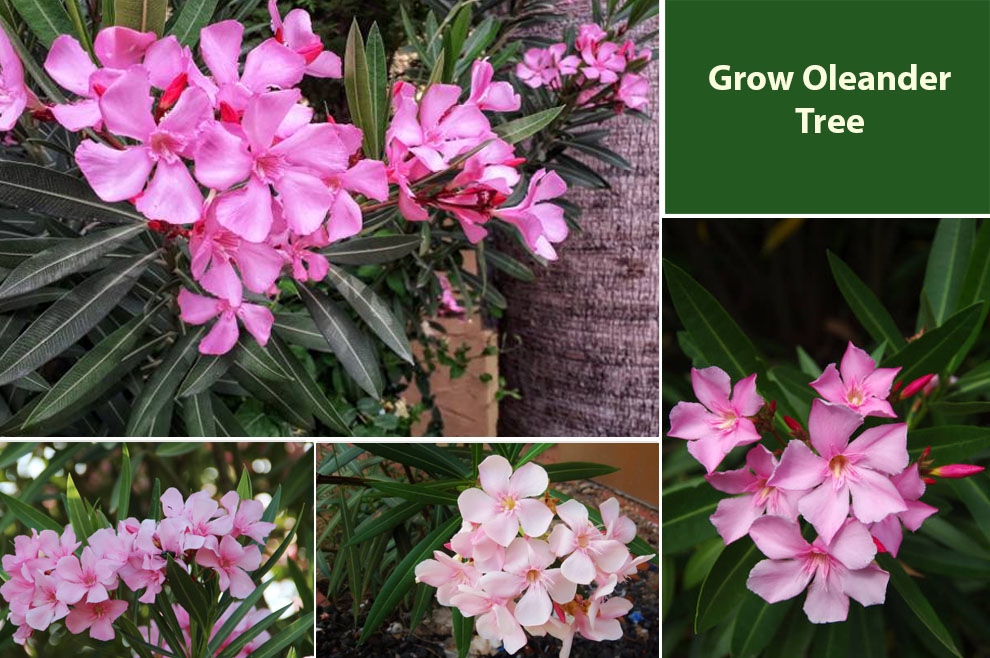
Oleanders flower all around the year. The plus point of growing the evergreen shrub Nerium Oleander is that the plant can add vibrancy to your garden with peppy and colorful clusters of blossoms. They grow in shades of red, orange, purple, pink, white, and salmon that bloom for months without the need for much maintenance.
If you find yourself thinking about how fast do Oleanders grow, then you would be glad to know that even in tough climatic conditions, the plant is pretty much unfazed.
Oleanders are shrubs that gain between 1 to 2 feet every year at a moderate pace. It can reach of height of 15 feet and a width of 10 feet if grown naturally.
In warm climates, overcoming various challenges like blistering heat, high humidity, and drought, the plant survives and thrives well. It gets damaged only if the temperature dips below 20°F.
If Oleanders get damaged by frost or freeze, it quickly grows from their roots once the old and dead growth is pruned.
Oleander Tree Information & Identification
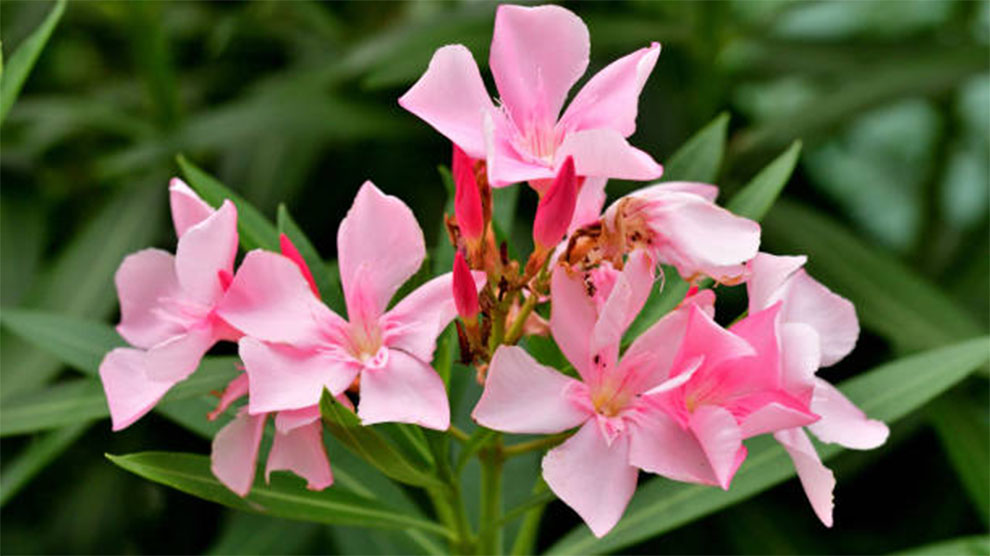
Oleanders can be recognized by their downy seeds that are produced in two to nine inches long capsules that split open upon maturity.
The leaves are leathery and sword-shaped with showy deeply-lobed flowers either double or single. They appear at the end of the branches during summer to spring and sometimes even in early fall and throughout the year in warm climates.
With basic oleander care, you can ensure how fast do oleander trees grow. Oleander grows at a steady rate and eventually reaches its mature size.
Originating from the Mediterranean and North African regions, Oleanders grow worldwide in subtropical and warm places. Since they grow quickly, they are planted as windbreaks and highway median adornments.
Oleanders are highly toxic and this may be the reason why they have survived naturally for so long. So, keep these plants away from pets, livestock, kids and even adults as all parts of the plants are poisonous.
Oleanders flower only on new growth. Pruning the shrub in the fall months encourages it to reproduce new stems and bloom profusely.
Oleander Tree Growth Rate
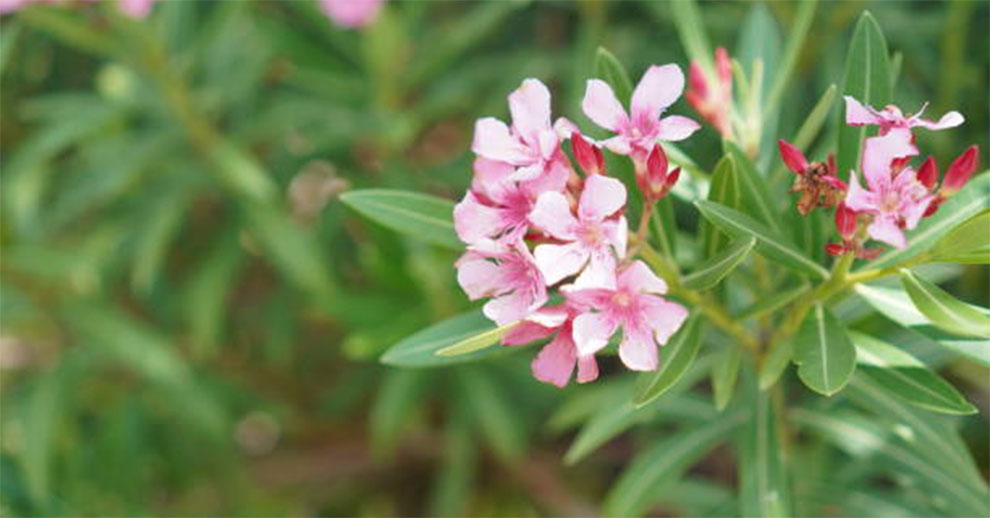
If grown in ideal growing conditions, Oleander’s growth rate is medium to rarely fast. Most Oleander varieties grow to be 8 to 15 feet tall with a width of 10 feet on maturity. Mostly they grow by 1 to 2 feet annually.
The shorter or the dwarf oleander varieties may add even less than a foot depending upon its fully attainable size.
Dwarf varieties grow from 4 to 7 feet tall and can spread a few feet. They are good as container plants in zones outside their range. These are a good option for groundcover or small shrubbery.
The midsize oleander plants grow from 8 to 10 feet, and tall varieties can reach a height of 10 to 20 feet. Taller ones are popular as hedges or privacy screens.
How To Make Oleanders Grow Faster?
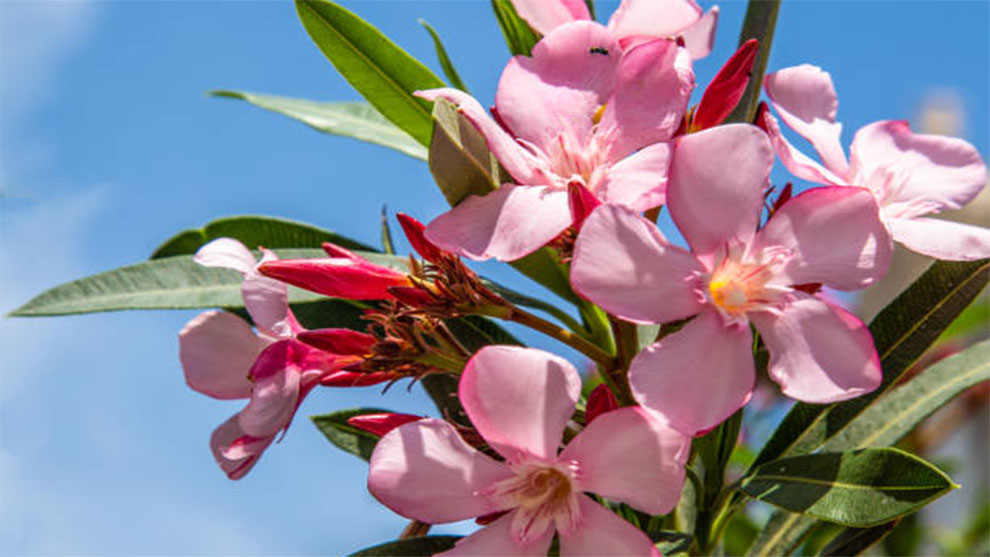
To grow Oleanders faster, it is best to plant them in sunny areas, though they enjoy the partial shade for a few hours. If you live in an area receiving intense, hot sun, the best spot is the one that gets full sunlight from early morning till noon and light shade when the sun is at its peak during the afternoon.
Oleanders prefer warm temperatures, ideally between 70-85°F (21-29°C). They are native to desert regions and are adapted to survive in dry, arid conditions.
Though Oleanders can tolerate drought, they can get stressed and slow down from extended periods of dry spells. To enhance how fast do Oleander bushes grow, you should fertilize Oleanders.
It’s best to fertilize oleanders during the active growing season, typically spring and summer, when they are actively growing and producing new leaves. It’s important to follow the instructions on the fertilizer package for the appropriate amount and frequency of application.
A balanced fertilizer (10-10-10) or a fertilizer specifically formulated for succulents and cacti can be used, and it should be applied at a quarter strength or less.
Another thing is soil. A well-draining cactus or succulent potting mix is ideal for growing oleanders. You can also make your well-draining soil by mixing regular potting soil with coarse sand, perlite, or vermiculite.
When watering oleanders, it’s best to water them thoroughly and wait for the soil to dry out before watering again. This will prevent over-watering and help prevent root rot.
Repotting your Oleanders every 1-2 years can give them more room to grow their roots and provide them with fresh potting soil, which can give them a boost to grow faster.
The best time to repot is during the active growing season, which is typically spring or early summer.
It is also important to note that some succulent species grow faster than others and that the growth rate can also depend on the age of the plant, the pot size, light availability, temperature, humidity and soil condition.
Oleander Tree Height and Lifespan
With a moderate to sometimes fast Oleander tree growth rate, they can grow to be 15 and sometimes 20 feet tall and have a lifespan of about 20-30 years. However, with proper care and optimal growing conditions, they can live longer.
When Should You Plant Oleanders For The Best Growth?
Oleanders are best planted in the spring or fall when temperatures are mild, and the soil is moist. This allows the plant enough time to establish its roots before the hot summer weather or winter cold arrives.
It is important to note that oleanders are quite drought-tolerant, but they do need regular watering when they are first planted to help them establish.
Where Is The Best Place To Plant Oleander To Let It Thrive?
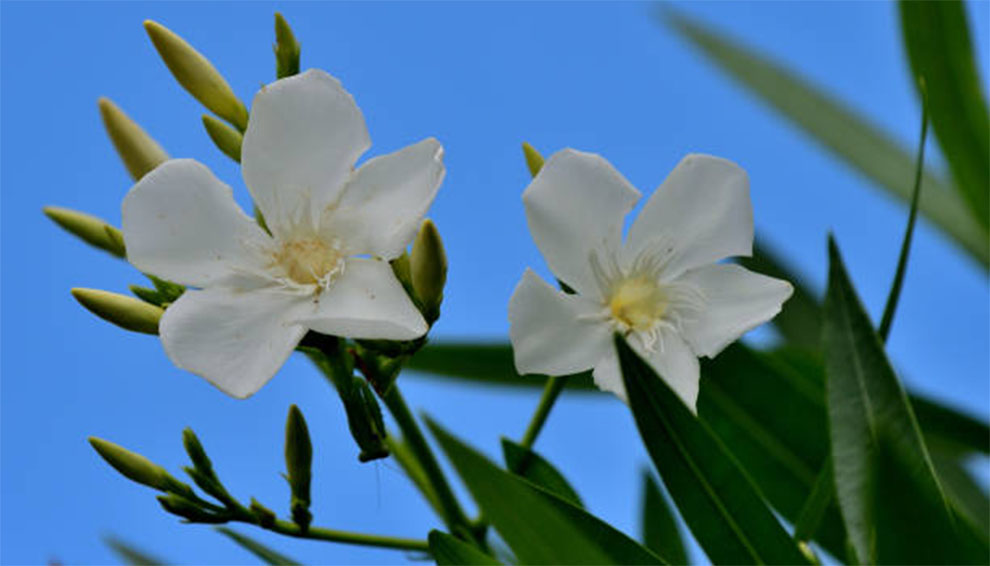
For best growth, oleanders should be planted in an area that receives full sun, which means at least 6 hours of direct sunlight per day. They can tolerate some shade, but they will not bloom as well in shaded areas.
They are also drought-tolerant once established, but they do need regular watering when they are first planted.
In USDA hardiness zones 8-10 growing Oleanders outdoors throughout the year is not a problem. However, in Zones 4-7, they can be grown outdoors most of the time except for the coldest days of winter when you need to shift them indoors.
It’s important to note that Oleander is toxic to humans and animals; it should be planted away from the reach of children and pets.
How Far Apart Should Oleanders Be Planted?
The recommended spacing for planting oleanders can vary depending on the mature size of the particular cultivar and the intended use of the plants.
For hedge or screen planting, oleanders should be spaced about 3-4 feet apart. This will allow for good air circulation and will prevent the plants from becoming too crowded. This directly affects how fast do Oleanders grow.
For specimen or accent planting, oleanders can be spaced anywhere from 5-10 feet apart, depending on the size of the cultivar. This will provide enough space for the plant to grow and mature without becoming overcrowded.
When planting multiple oleanders, it is important to take into account their mature size, so they have enough room to grow and spread out.
Does Oleander Make A Good Hedge?
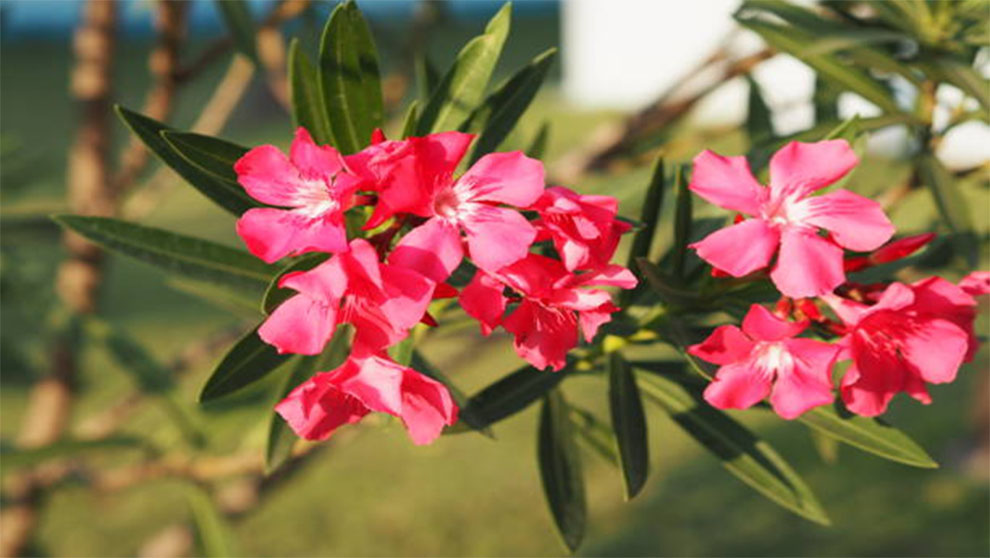
Oleander can make a good hedge if properly maintained. It is a evergreen shrub that grows at a moderate pace and can reach up to 20 feet tall. It has glossy leaves and produces clusters of colorful flowers in pink, red, white, or yellow.
So, they work as beautiful hedge plants. Just keep in mind it is not recommended to plant it in areas where the temperature drops below freezing for a healthy Nerium oleander growth rate.
How Do I Make My Oleander Thicker?
There are a few ways to make your oleander hedge thicker:
1. Prune: Pruning your oleander regularly will encourage new growth and make it bushier. Prune it back in the spring, before new growth appears.
2. Fertilize: Fertilizing your oleander with a balanced fertilizer will provide it with the necessary nutrients to promote healthy growth.
3. Watering: Make sure your oleander is getting enough water, but not too much. Overwatering can lead to root rot.
4. Mulch: Add a 2-3 inches layer of mulch around the base of your oleander, this will help to retain moisture and keep the roots cool.
5. Pinching: Pinching the tips of the new growth will also encourage bushiness.
Oleander Buying Tip
When selecting an Oleander bush, try to opt for one that is a year or two older. It should have a straight, strong and central stem as such varieties are faster-growing and they are the best as hedges and living screens.
